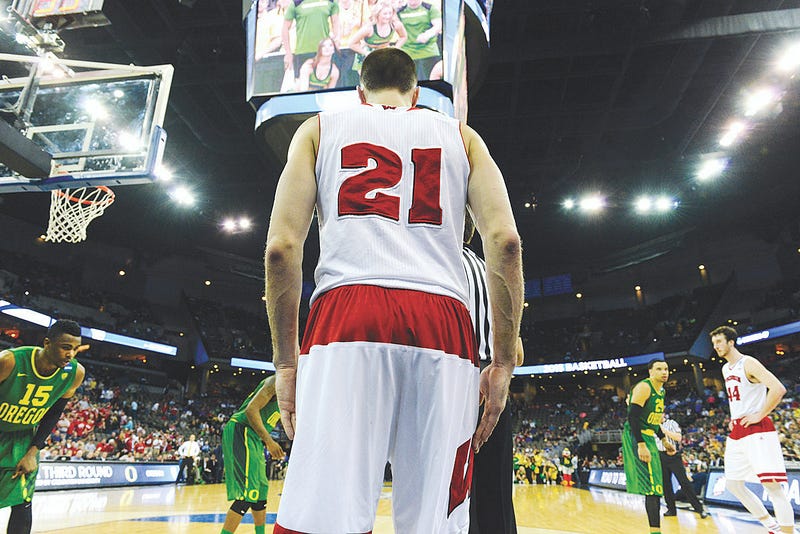
By Stephen Schwartz
As a founding member of the Big Ten Conference, the Wisconsin Badgers athletic teams have a long and rich history dating back more than century. Proudly donning the iconic cardinal and white throughout the years, both men and women student athletes competing in a variety of different sports have historically earned national recognition and respect for their accomplishments. UW-Madison has produced over 100 Olympic athletes and claimed more NCAA boxing championships than any other school prior to the sport’s discontinuation, which demonstrates the level of excellence that has come to be associated with the institution. While these storied programs embody a modern day powerhouse in collegiate athletics, this wasn’t always the case.
Andy Baggot, an Insider for UWAthletics.com who has been covering the Badgers for the last 35 years, explains that in order to appreciate the current state of Wisconsin athletics, one needs to look before 1990. During this time, the athletic department had a more than $2 million deficit as well as outdated facilities — and football, the sport that drives the department with the revenue it generates, had been mediocre for years. “You had people leaving tickets on windshields hoping that others would take them off their hands,” says Baggot, describing the general sense of apathy towards the football program in the ’80s. That all changed when Pat Richter was hired as the new athletic director in 1989. Richter, who subsequently hired Barry Alvarez as the head football coach, completely revitalized an athletic department that was struggling to sustain itself. Under Richter’s leadership, Alvarez turned the football program around and eventually posted the school’s first winning season in years. By the time Richter stepped down to hand the reigns over to Alvarez in 2004, not only was the deficit erased, but a sizable budget had been generated to sustain the department indefinitely into the future.
Discussion of this transformation would not be complete without mentioning Ron Dayne. As the 1999 Heisman trophy winner and all-time leading rusher in NCAA history, Dayne was, according to Baggot, “the most impactful student athlete,” to have ever passed through UW-Madison. At a time when the football team posted their first losing season after going to the Rose Bowl under Alvarez, there were many questions about where the program was headed. Enter Dayne, who in his first season led the Badgers to a major victory in the 1996 Copper Bowl. His record-setting numbers generated genuine enthusiasm about the program, putting students and alumni alike back in the stands.
While football and, more recently, men’s basketball tend to steal the spotlight in terms of national recognition, that is not to say that the other sports teams have gone unnoticed. Wisconsin hockey, both men’s and women’s, has a long history of being one of the premier teams in the country. The most recent women’s ice hockey world championship gold medalist team featured nine former Badgers. Track and Field boasts its own plethora of standouts, including Chris Solinsky, who won five championships at UW-Madison. Every sport on campus has had its exceptional seasons and athletes, and, as Baggot explains, “It’s not just football or basketball — everyone is involved, both men and women, and it’s important to know how hard everyone has worked.”
Given the level of commitment these student athletes dedicate towards perfecting their game, it’s only natural that competitive rivalries develop. The longstanding competition between Wisconsin and Minnesota is one of the fiercest in all of college sports and is one of significant historical importance. In football, it is the most-played rivalry in the country: the teams have met on the gridiron over 125 times in the same number of years. Starting in 1930, the annual game was played for the right to hold the Slab of Bacon trophy for the remainder of the year. Thirteen years later, this trophy was lost, only to be rediscovered 50 years later in a Camp Randall storage closet in 1994. In the meantime, the trophy was replaced in 1948 by the iconic Paul Bunyan’s Axe, for which both teams still compete today.
With rivalry comes intense school spirit that manifests itself through extraordinary school traditions. Whether it’s the marching band’s unique Fifth Quarter or the many game day songs every Badger knows by heart, these traditions elevate the athletic experience to a whole new level. But perhaps no tradition has become more remarkable than Jump Around. This phenomenon, originating in 1998 because someone decided to play it on a whim, has evolved into a nationwide sensation. While Wisconsin athletics has had its ups and downs, traditions like this ensure its longevity and keep people coming back for more. As Baggot notes, “The students have always been the biggest catalyst for the Wisconsin Badgers.”
